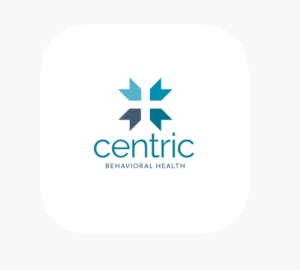Before we look at “what is critical incident stress management,” It’s essential to start by understanding what a critical incident is. A critical incident is an alleged and traumatizing event or condition that poses high mental and health risks to an individual.
The events often happen suddenly and unexpectedly, and when left unresolved, they are overwhelming and traumatic. That is where CISM, Critical Incident Stress Management, comes in.
CISM involves a critical incident intervention to enhance the most appropriate tactics to respond well to the event.
Examples of critical incidents include:
- A sudden loss or injury of your close associate
- Witnessing a filthy mass event
- Being in peril of life situation
- Terrorist attacks
- Building collapse
- Hostage situations
- Losing a person you were rescuing
- Being part of a sensational event covered in the media
What Does Critical Incident Stress Management Involve?
As stated earlier, critical incident stress management exists to mitigate mental, psychological, and health effects that may arise following an unexpected event (minor or significant).
In other words, CISM is a debriefing procedure designed to help critical incident victims deal with and normalize any traumatizing event they come across. Initially, it was developed to take care of civilian first responders (emergency workers, fire, police, disaster rescuers, and ambulance) and other veterans.
It has been developed to be used everywhere a traumatizing event can occur, and there is a need to address it – it’s being used virtually.
Besides, they’ve been developed in disaster relief, community outreach, education, preparedness, and support groups to cover you from anywhere, whether at school, the workplace, etc.
Is Critical Incident Stress Management Necessary?
Individual levels of distress have short and long-term effects on their production levels. It affects the ability to perform roles as usual and, at worst, discourages them from actively participating in their operations.
While most of these are brought from experiences of certain traumatizing events, there is a need for CISM to help in the recovery process and minimize the effects of trauma.
Some reasons that necessitate the need for CISM include the following:
- To reduce the critical event effects
- Educate yourself on better reaction instincts in critical instances
- To boost your natural recovery process
- To know when the need for further consultation arises
Critical Incident Stress Management Types
CISM packages are well-integrated with useful multi-component incident management strategies to provide exceedingly satisfying results. However, the incidence management method depends on event proximity, the number of people engaged, and the event itself.
Here are the different types of CISD:
- Debriefing
- Defusing
- Grief and Loss Session
- Pre-crisis education
- Critical incident adjustment support
- Crisis management briefing
Let’s look at some of these in detail below:
Critical Incident Stress Debriefing (CISD)
CISD, commonly known as debriefing, is an incident stress management method that specifically assists trauma-related victims who develop psychological or physical implications.
Usually, CISD is done within 72 hours of the crisis, giving the victims a chance to share their experiences.
The process involves:
- Identifying the individuals at risk and how each person has been affected.
- Informing the victims of the services they can acquire in their society.
- Sharing with them other coping mechanisms.
The last step is to track their progress the day after the debriefing. And based on the findings, the individual(s) may be referred to a professional counselor.
Critical Incident Stress Management Defusing
Unlike debriefing, which can wait for up to 72 hours to mitigate the effect, defusing is done the same day after a crisis before the victim can sleep.
Its purpose is to ensure the victim’s feelings remain normal after a crisis. It also involves determining short-term symptoms that may develop within the day of the event.
Sometimes, the victim is given a phone number to call if they feel uneasy or determine any related symptoms.
A thing to note in defusing is that they are structured to help only the affected person in the incident. They are often done in the scene to identify the person involved.
Crisis Management Briefing
CMB, Crisis Management Briefing, forms the dominant crisis management technique. It involves a group meeting to gather all minor and major details covering the crisis.
CMB is also regarded as an information push and may involve 15 to 200 people. Its format, venue, and structure are very useful in helping managers demonstrate their leadership, credibility, rumor, and chaos control.
The peer support groups educate incident stress victims on essential stress management, stress reaction kits, and other coping techniques.
Ideally, a CMB is a place to regain composure, reconnect with yourself, and generate cohesion.
Grief and Loss Sessions
A grief and loss session is a CISM technique employed following the sudden death of a loved one. It is designed to help the bereaved understand and compose their grief. This involves the creation of a relaxed atmosphere where the victim can open up and share their experiences.
Critical Incident Stress Management Effectiveness
This debate may never end! Some experts claim that critical incident stress management is, no doubt, efficient in managing trauma and distress. This is often challenged by several critics from people who have contrary experiences.
Some state that CISM doesn’t help with management tips after a traumatic incident, like PTSD or post-traumatic stress disorder.
An effective CISM should be well-integrated and varied, providing robust care and high-quality support, noting its engagement with your mind.
Final Words
Critical incident stress management is very useful, especially in the initial stress management stages. It has helped many victims of less extreme trauma challenges recover shortly after the therapy.
However, it’s not always advisable to depend on CISM, more for people experiencing continued depression, stress, agitation, and anxiety weeks after a critical event. This group of people should seek professional therapy support.














